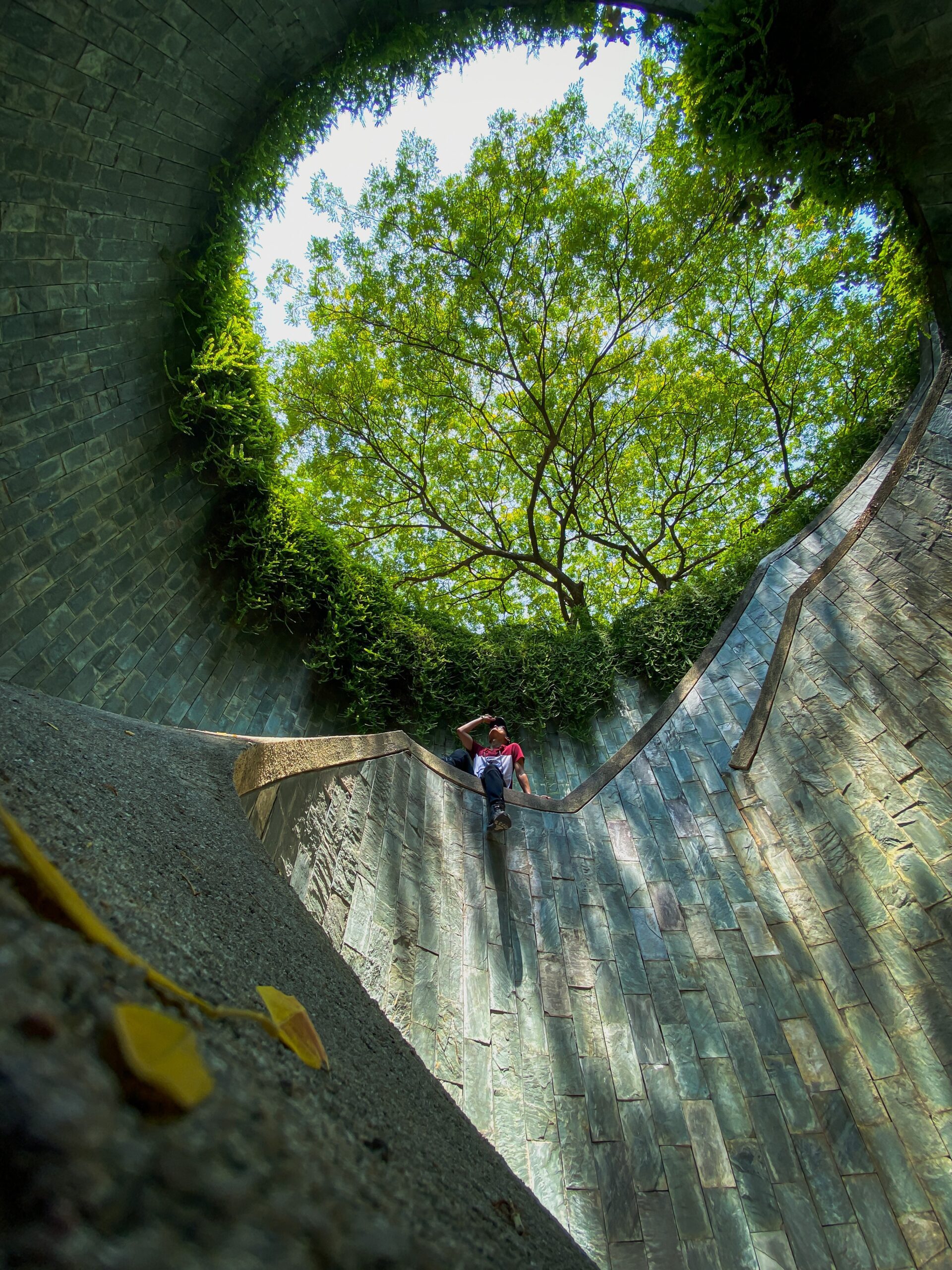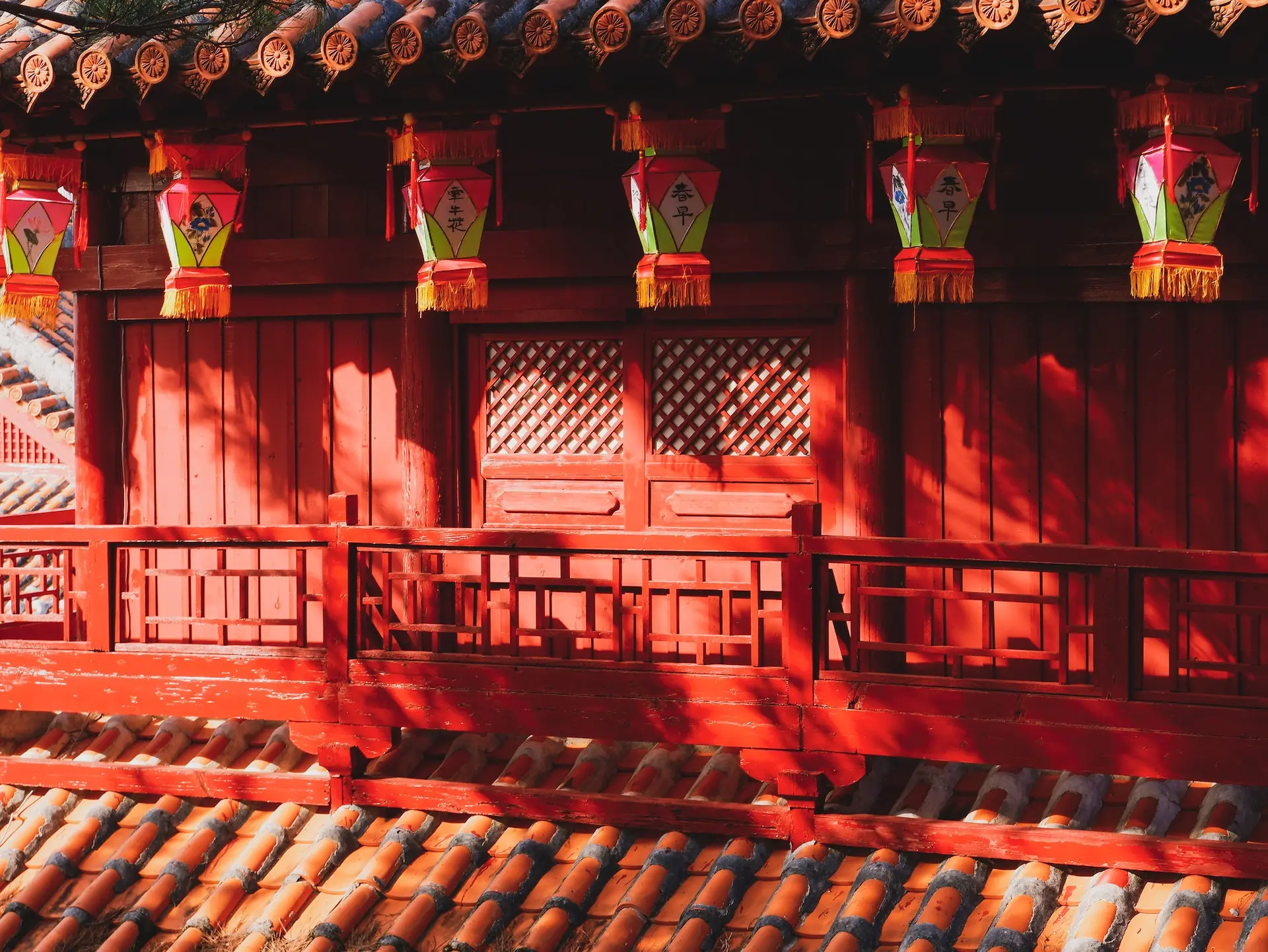Sigiriya isn’t just a spot on the map; it’s where history breathes.
Standing at the foot of Lion Rock, you can’t help but feel small, not just in size but in time. This rock fortress, soaring into the sky, tells stories of ancient kings and lost kingdoms.
It’s not even about the climb or the ruins; it’s about the connection to a past so vibrant, you can almost hear the whispers of old in the wind (along with the buzzing hornets).
Around here, every path leads to discovery. From the serene gardens that hint at bygone luxury to the frescoes that still blush with ancient beauty, Sigiriya invites you to pause, look closer, and let the history soak in.
So, as we dive into what to do around Sigiriya, remember, this guide isn’t just about places to go; it’s about stepping into a living story. Let’s explore together, with open hearts and eager footsteps, ready to find not just the sights but the soul of this timeless land.
Table of Contents
Toggle
History of Sigiriya
Sigiriya, often hailed as the Eighth Wonder of the World, tells a tale that stretches back to the 5th century CE.
King Kashyapa, seeking a secure and majestic seat of power, envisioned a palace in the sky, one that would not only serve as a formidable fortress but also as proof of his greatness. The result was a complex of palatial structures, gardens, and frescoes, unparalleled in their sophistication.
It’s also steeped in tales of power struggles, with King Kashyapa’s ascent to the throne marked by fratricide and rebellion. After his death, Sigiriya transitioned from a kingly abode to a Buddhist monastery, until it was gradually abandoned to the elements. (See also: Theravada Buddhism)
Rediscovered in the 19th century, Sigiriya has since been excavated and restored, offering a glimpse into Sri Lanka’s glorious past.
Top Things to Do in Sigiriya
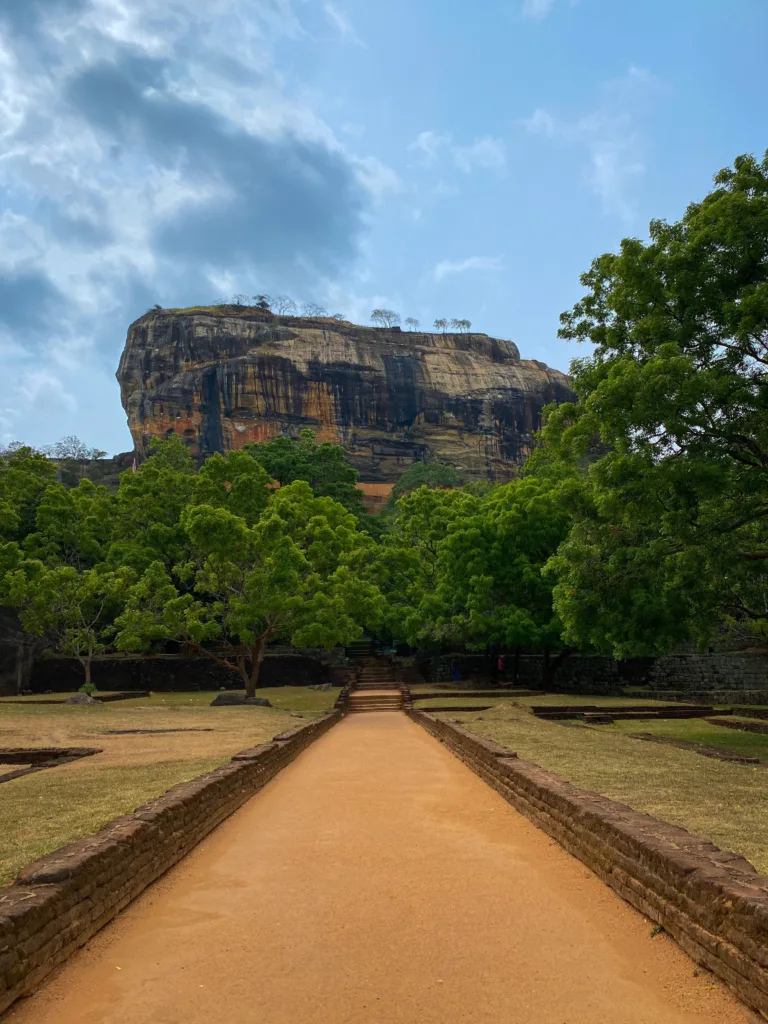
1. Climb Sigiriya Lion Rock
Sigiriya, or Lion Rock, is a remarkable historical monument in Sri Lanka, dating back to the 5th century. Built by King Kashyapa (477-495 CE), this ancient rock fortress and palace ruin is renowned for its engineering marvels.
The journey up Sigiriya is a step into the past, beginning with the water gardens that demonstrate advanced hydraulic technology from as early as the 5th century. These gardens are an early example of sustainable engineering, utilizing natural water retention and irrigation methods.
The final ascent through the Lion Gate, featuring massive lion paw sculptures, leads to the summit, over 200 m (660 ft) high. Here, the ruins of Kashyapa’s palace can be explored, offering panoramic views of the surrounding countryside.
If you want to learn more about Lion Rock, you can check out my in-depth article on it here.
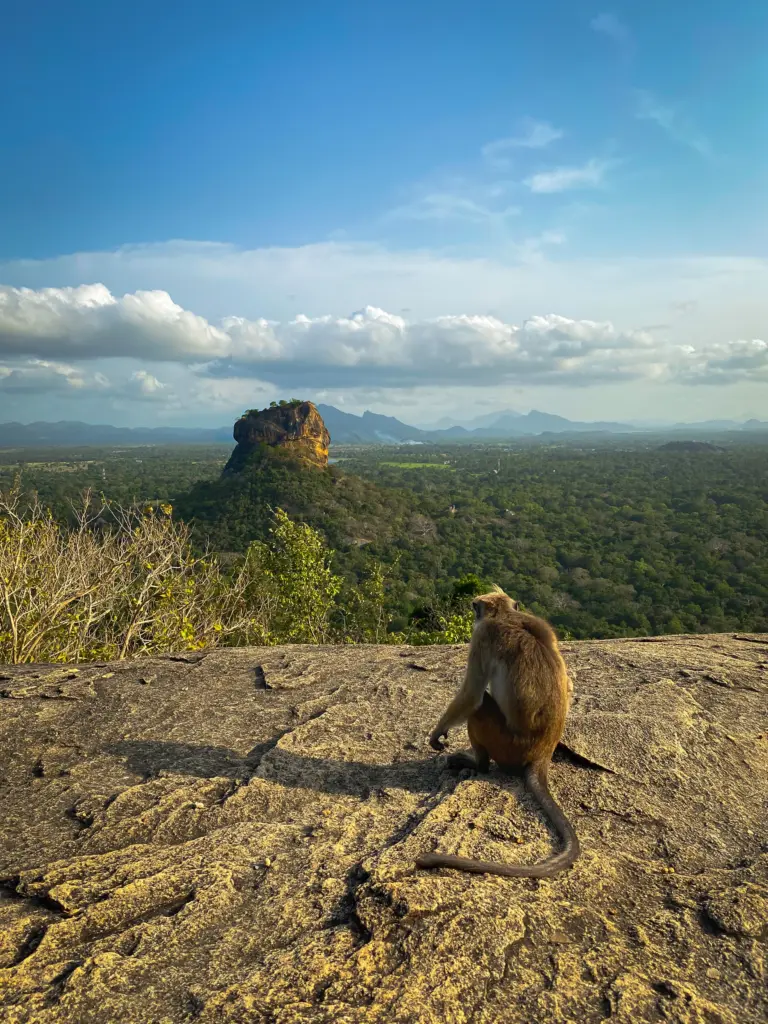
2. Watch the Sunset at Pidurangala Rock
Situated just a few kilometers north of Sigiriya, Pidurangala has a rich history of its own, dating back to the reign of King Kashyapa, where it served as a monastery.
The climb to the top of Pidurangala is less structured than Sigiriya, with the final ascent requiring a bit of a scramble over boulders. However, the effort is rewarded with panoramic views that stretch across lush forests to the iconic silhouette of Sigiriya Rock.
It’s this unique vantage point that makes Pidurangala a sought-after spot for sunset watchers. I mean, just look at the shot I took right?
The best time to start your climb is about an hour before sunset, allowing you enough time to reach the summit and find the perfect spot.
Remember to bring a flashlight for the descent, as the path can get quite dark after sunset. Also, packing water and wearing sturdy shoes will make your climb more comfortable.

3. Visit the Sigiriya Archaeological Museum
Visiting the Sigiriya Archaeological Museum is an essential part of understanding the full historical and cultural context of Sigiriya Rock Fortress. Situated at the main entrance to the Sigiriya site, this museum offers a comprehensive introduction to the area’s rich heritage before you even set foot on the ancient rock fortress itself.
The museum, a thoughtful collaboration between the Central Cultural Fund of Sri Lanka and UNESCO, houses a wide array of artifacts unearthed during excavations around Sigiriya. These include items that range from everyday objects used by the ancient inhabitants to exquisite pieces of art that once adorned the royal palace and its grounds.
One of the museum’s highlights is its detailed models and dioramas that depict Sigiriya as it might have looked during its peak in the 5th century CE. These models provide a visual representation of the rock fortress, including its advanced water gardens, frescoes, and the impressive lion’s gate.
4. Take a Hot Air Balloon Ride
Taking a hot air balloon ride in the vicinity of Sigiriya offers an utterly unique perspective on this ancient landscape. Imagine floating gently above the earth as the sun rises, painting the sky with hues of pink and gold. Below, the majestic Sigiriya Rock Fortress emerges from the mist, revealing its full splendor in the soft morning light.
Hot air balloon rides around Sigiriya are typically scheduled for the early morning when the winds are calm and the air is cool. If you’re interested in taking up to the skies, you can join this tour.

5. Admire the Sigiriya Frescoes
The Sigiriya Frescoes are exquisite paintings, located halfway up the western face of Sigiriya Rock.
The frescoes depict celestial maidens, or “Apsaras“, in various graceful poses, adorned in vibrant colors that have withstood the ravages of time. Similar to Apsaras carvings in Cambodia‘s Bayon Temple.
Believed to have covered most of the western face of the rock, only a portion of these frescoes survives today. The maidens are portrayed amidst clouds, suggesting they are part of the heavens, floating ethereally above the world. The use of natural pigments has allowed the colors to remain vivid, with the shades of red, orange, and green still capturing the eyes of many.
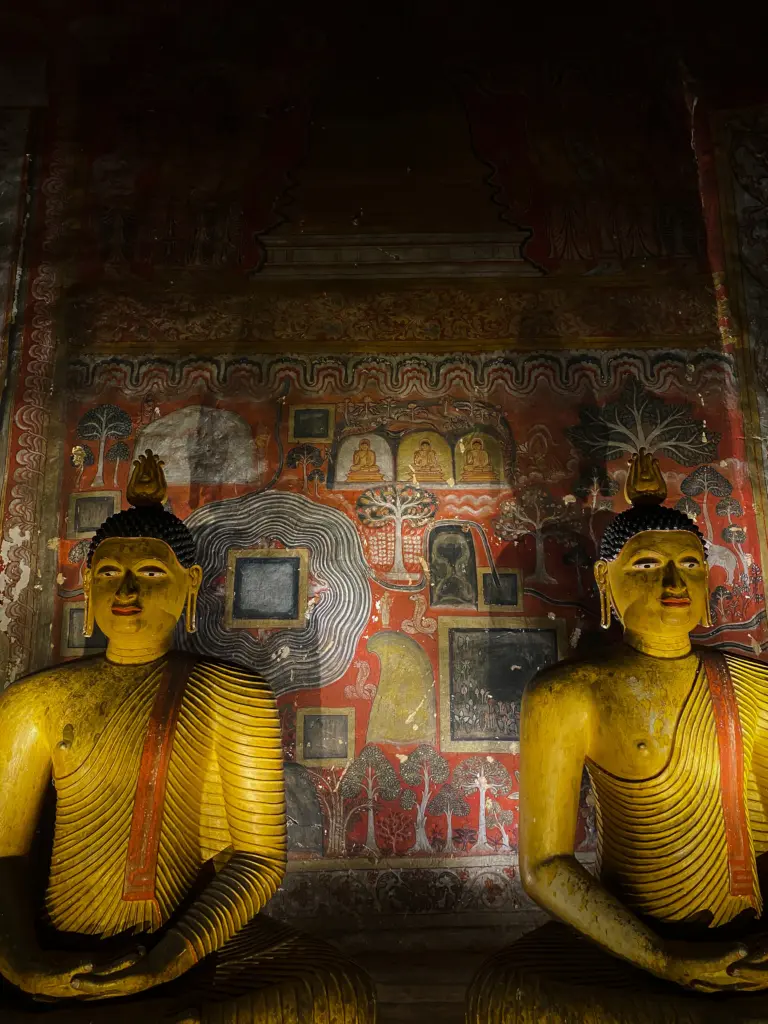
6. Explore the Dambulla Cave Temples
Exploring the Dambulla Cave Temples, located just a short drive from Sigiriya, is like stepping into a different realm—a serene, sacred space that has drawn pilgrims for centuries.
Dating back to the 1st century BCE, this UNESCO World Heritage site is an impressive complex of five caves, each filled to the brim with ancient Buddha statues, murals, and intricate carvings.
Inside, the caves reveal their secrets: over 150 Buddha statues in various poses, representing different aspects and moments of the Buddha’s life, from serene meditation to the moment of enlightenment.
The walls and ceilings are adorned with religious murals covering an area of over 2,100 square meters, telling stories from the Buddha’s life and teachings.

7. Walk a Trail at Popham's Arboretum
Right across the cave temples likes Popham’s Arboretum.
Popham’s Arboretum is Sri Lanka’s first and only dry zone arboretum, founded by British forester Sam Popham in 1963.
The arboretum spans over 27 acres of land, meticulously preserved to showcase a diverse range of native trees and plant species. Walking along its trails, you’re enveloped in a world of greenery, where the only sounds are the rustling of leaves and the calls of birds (it’s home to over 50 species of birds!)
Popham’s philosophy was centered on allowing the forest to regenerate naturally, with minimal human intervention. This approach has resulted in a lush, dense canopy that provides a cool respite from the heat, and a network of trails that invite exploration.

8. Hike the Rose Quartz Mountain
Located in the Jathika Namal Uyana, this area is renowned for having the largest rose quartz mountain range in South Asia, a stunning natural phenomenon that dates back over 500 million years.
The hike itself is a relatively easy journey. As you ascend the trail, the surroundings unfold in lush greenery, punctuated by the pinkish hue of the quartz formations.
Historically, the area was considered sacred, with ancient monks meditating among the quartz deposits, drawn by their purported healing and spiritual properties. Walking through this landscape, it’s easy to feel a sense of tranquility and connection to the natural world.
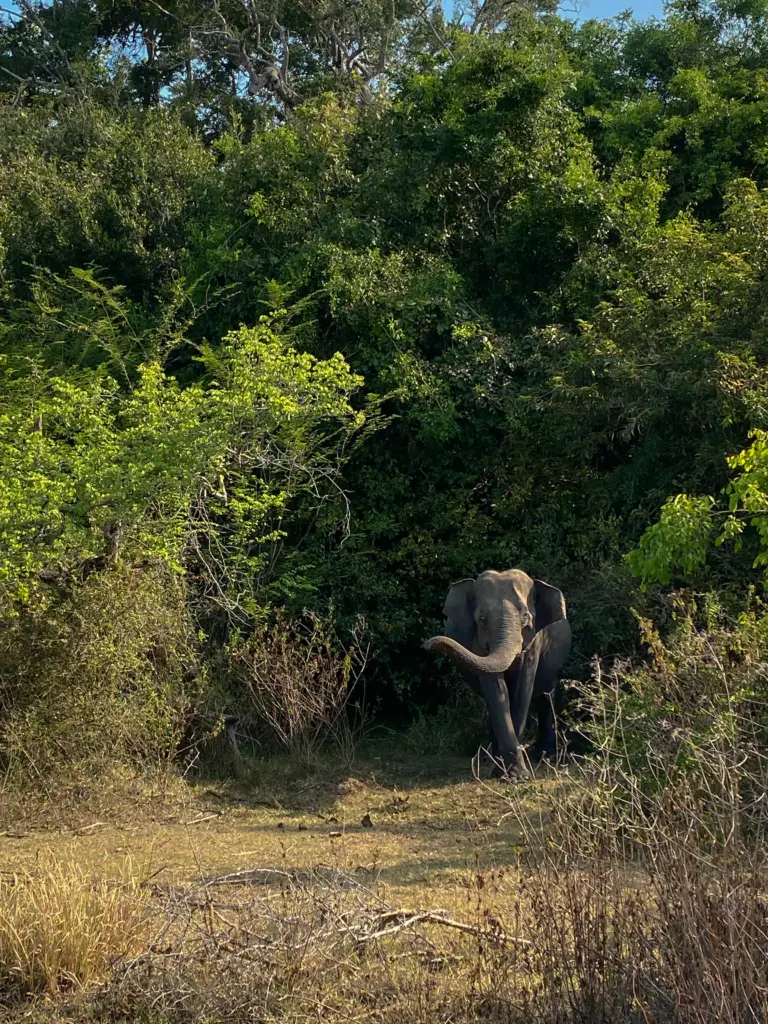
9. Join a Safari at Minneriya National Park
A safari at Minneriya National Park is an exhilarating experience that brings you face-to-face with the wild heart of Sri Lanka. This park is famous for the Minneriya Tank, a vast reservoir built by King Mahasen in the 3rd century, and for hosting one of the most spectacular natural events in Sri Lanka: “The Gathering.”
“The Gathering” is a seasonal congregation of hundreds of wild elephants that come to the Minneriya Tank to drink, bathe, and feed during the dry season (usually from July to September), making it the largest gathering of Asian elephants in the world!
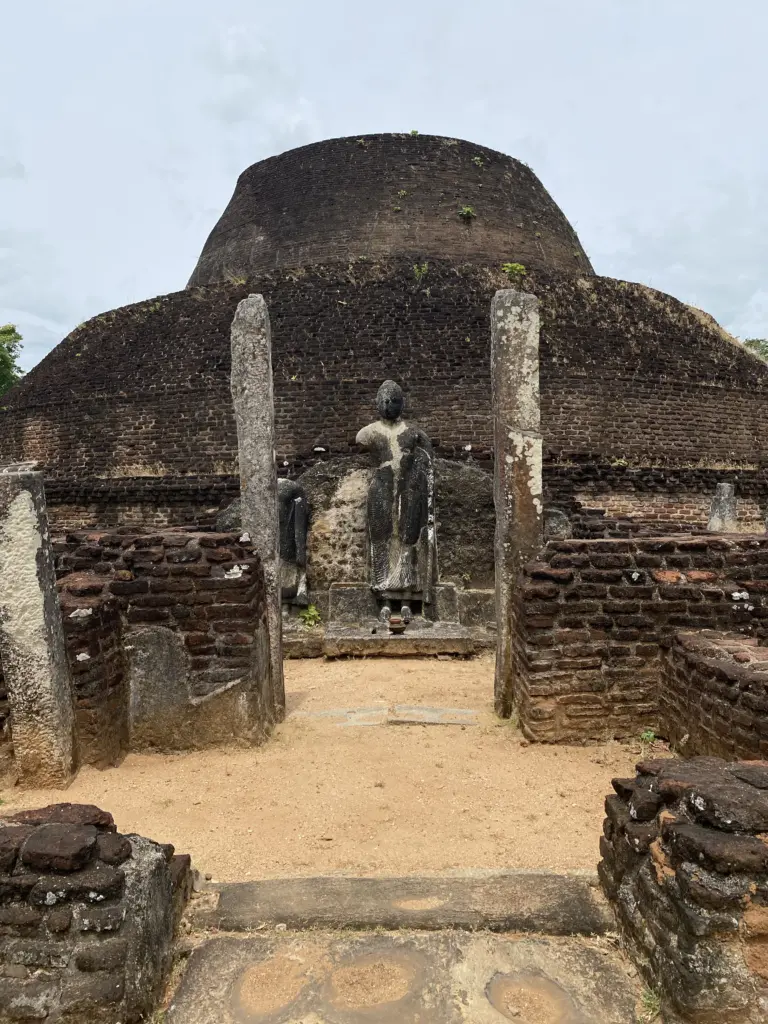
10. Cycle Around Polonnaruwa
Cycling around Polonnaruwa offers an engaging way to explore the ancient city’s ruins and landscapes.
As the second capital of Sri Lanka after the decline of Anuradhapura, Polonnaruwa’s well-preserved archaeological treasures and UNESCO World Heritage status make it an amazing stop if you’re doing the Cultural Triangle.
Riding a bicycle through Polonnaruwa allows you to move at your own pace, stopping whenever a site catches your interest. The ancient city is relatively flat, the network of roads and paths connecting the ruins is well laid out, taking you through a series of remarkable historical and architectural sites, including the Royal Palace, the Quadrangle, and the Gal Vihara, with its impressive rock-carved Buddha statues.
If you’re interested in cycling in Polonnaruwa, you can check out my article on it here.
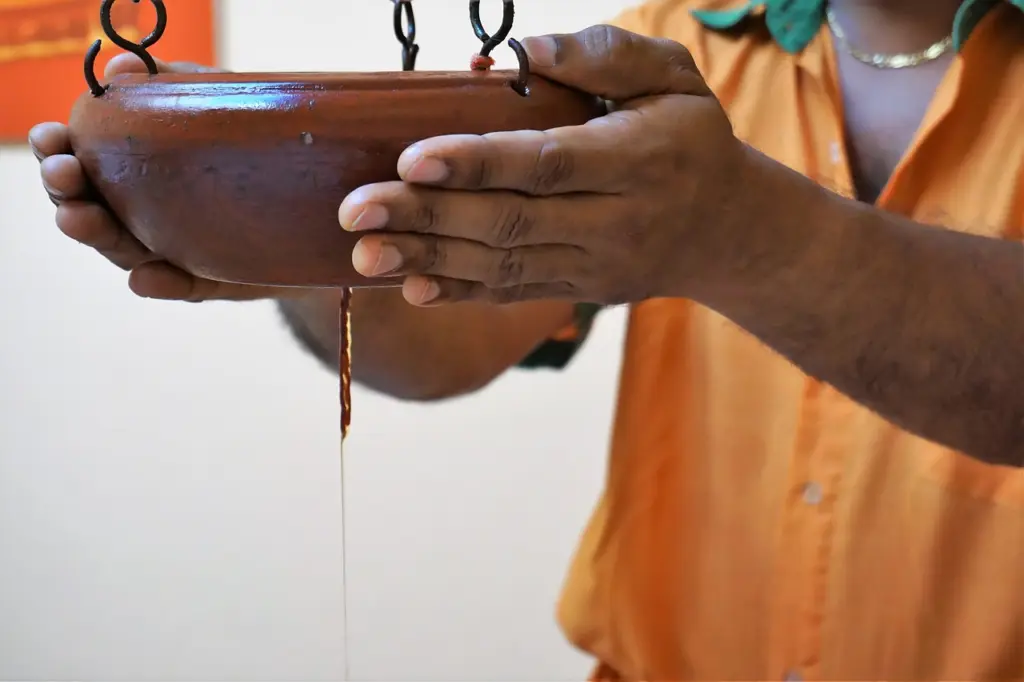
11. Experience an Ayurveda Massage
An Ayurveda massage is not just about indulging in relaxation; it’s about connecting with an ancient system of healing that has been part of Sri Lanka’s cultural heritage for thousands of years.
Ayurveda, which translates to “the science of life,” is a holistic approach to health and wellness, emphasizing balance among the body, mind, and spirit.
An Ayurvedic massage, with its use of herbal oils and specific techniques, is designed to detoxify, nourish, and revitalize the body, while also calming the mind.
The massage itself is deeply soothing, with gentle but firm strokes, pressure points, and oil blends that are believed to have healing properties.
In addition to the physical relaxation, an Ayurvedic massage provides a spiritual uplift, leaving you feeling mentally refreshed and balanced. It’s an immersive experience that offers a glimpse into Sri Lanka’s rich tradition of natural medicine.
Where to Stay in Sigiriya
Sigiriya is a great base to make if you’re exploring the Cultural Triangle. It’s close to other sites such as Polonnaruwa and Dambulla, and public transport available connecting to Colombo.
There are also plenty of safaris that are easily reachable such as Habarana and Minneriya. Here are some of the most recommended places to stay in Sigiriya:
Best Hotels in Sigiriya:
- Palitha Homestay – offers a unique lodging experience with its fan-cooled rooms that boast garden views and come equipped with mosquito nets for a comfortable stay. You can enjoy the convenience of complimentary in-room WiFi and free private parking. The rooms include attached bathrooms fitted with shower amenities, toiletries, and a spray bidet for added comfort.
- Liyon Rest – offers a tranquil accommodation experience with air-conditioned rooms that ensure a secure stay thanks to in-room safety deposit boxes. You’ll have access to free WiFi throughout their stay. The private bathrooms are well-appointed with showers and complimentary toiletries. From the comfort of your room, you can admire scenic views of the lake and mountains.
- Sigiriya Water Cottage – provides a serene retreat complete with a barbecue and sun terrace. Each room in this hotel is air-conditioned for comfort and is equipped with a flat-screen TV with satellite channels, allowing you to relax with a cup of coffee while enjoying views of the mountains or lake. Complimentary WiFi and private parking are added conveniences.
Best Hostels in Sigiriya:
- Tree House Hostel Sigiriya – extends a warm invitation to guests from around the globe, encouraging them to “come as a guest, go as a friend.” This unique hostel offers accommodation in tree houses, complete with a serene garden and complimentary private parking for those arriving by car.
- Roy’s Villa Hostel – offers a unique retreat for nature lovers, surrounded by wildlife including monkeys, birds, and bugs, and boasting breathtaking views of Lion Rock and Pidurangala Rock, as well as serene lakeside vistas accessible through picturesque rice fields. Roy’s Villa provides delicious vegan and native dishes prepared by local cooks, alongside free activities like cooking demonstrations and sunset walks.
- Mango Tree Home Stay – discover the warmth of authentic Sri Lankan hospitality by staying with a local family, offering the privacy of your own room amidst a lush landscape of mango and coconut trees. This unique homestay is perfectly situated for exploring the area’s natural and historical wonders.

How to Get Around Sigiriya
Navigating Sigiriya primarily revolves around two convenient options: tuk-tuks and tours:
- Tuk-Tuks: These nimble three-wheelers are a staple on the roads of Sigiriya, offering an authentic and flexible way to move around. Ideal for short distances, tuk-tuks can easily take you from your accommodation to the base of Sigiriya Rock, Dambulla, and Pidurangala Rock. The cost is reasonable, with fares typically ranging from 200 LKR to 500 LKR for local trips. Always confirm the price with the driver before starting your journey to avoid any confusion.
- Organized Tours: For those looking to explore Sigiriya and its surrounding attractions without the hassle of planning every detail, joining a tour can be a great choice. Tours not only provide transport but also offer the insight of knowledgeable guides who can enhance your understanding of the area’s history. If you’re keen you can join a tour such as this one.
Best Time to Visit Sigiriya
The best time to visit Sigiriya is during the dry season from January to April. During this time, you can expect sunny and pleasant weather, perfect for outdoor activities like climbing Sigiriya Rock or going on safaris. Temperatures hover around 22°C – 31°C (72°F – 88°F).
This period ensures clear skies and minimal rainfall, allowing you to fully enjoy the natural beauty and historical sites of Sigiriya without the interruption of heavy rains.
Plan Your Trip to Sri Lanka | Best Travel Resources
Book Your Accommodations
- Booking.com – the world’s leading online booking platform for accomodations around the world, they have an extensive amount of available listings with zero booking fees and best price guarantees.
- Hostelworld – a backpacker’s best friend, Hostelworld has the largest collection of hostels and guesthouses for affordable prices.
Don’t Forget Insurance
- SafetyWing – from Nomad Insurance, an insurance by nomads for nomads. They understand our lifestyle well and have really comprehensive and flexible plans that cater to any traveler.
Find Cheap Flights
- Kiwi.com – my go-to for booking and finding the cheapest flights and it’s helped me save tons of money. They do virtual interlining which is connecting flights from airlines that do not codeshare, so you can find routes that you wouldn’t be able to find normally.
Join Tours & Activities
- GetYourGuide – is one of the best places to find unique tours and activities. I found that it’s an excellent way to meet fellow travelers and create fond memories. They are not only limited to tours as they also offer niche services such as skip-the-line tickets or private transfers.
Catch a Ride
- Rentalcars.com – nothing beats the freedom of the road, Rentalcars.com is the world’s largest online car rental service. They operate across 160 countries so they’re the perfect partner to work with if you find yourself wanting a ride.

